SALT LAKE CITY – The 2024 Ford Ranger is all-new, but it isn’t just for you, America. While its various midsize pickup competitors are effectively exclusive to North America, leaving different trucks to meet the needs of various global markets, the Ranger sees duty across the globe. In fact, it’s already been on sale in places like Great Britain, Australia and Thailand for months. I did a double take when I sauntered past one in central London last September.
Now, if you know anything about the last-generation Ford Ranger, this may not come as a surprise. That too started life abroad long before coming ashore here, albeit with new underpinnings beneath a copy-paste body and cabin. It can be argued those carryover elements were what made the Ranger a less-than-successful entry. It was good to drive, plenty capable and we even put it first in a midsize truck comparison test, but the interior was just as dated as the global Ranger’s first model year would suggest (2011), while the styling spoke to different truck tastes. To put it bluntly, Americans want their trucks to look all rugged and tough. Folks in Iceland and Down Under? Not so much.
Well, that was the assumption, at least, including by those within Ford. Nevertheless, Ford went out on a limb with a common burly-and-tough design for every market the next-generation Ranger would service. That includes a significant 2-inch increase in wheelbase and width that gives it notably different proportions than the tall, skinny visage of not-from-around-here pickups like the last-generation Ranger. Ford brand manager Andrew Cascaden says it was theorized that this more American direction would end up resonating with other markets, but it was still a hypothesis. Turns out, the reception exceeded expectations. Rugged and tough works in Bangkok and Sydney, too, it seems.

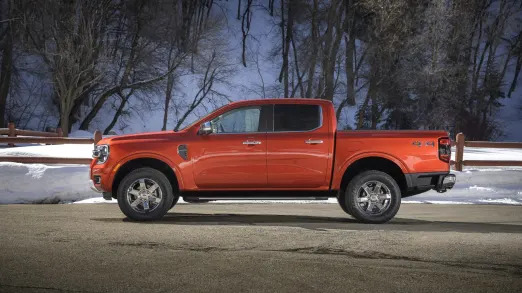
American customers were the ones specifically demanding those two adjectives, however, along with various requests for the interior that I’ll get to in a moment. From an aesthetic perspective, the wider stance, tougher front end and creased fenders do much of the macho heavy lifting. It looks good without trying too hard, and without making the standard Ranger look totally naked once you’ve seen the Ranger Raptor (its story is coming March 21).
From a mechanical perspective, the new Ranger doesn’t represent a huge rugged-and-tough difference. The frame is improved, not all-new, because remember, it wasn’t as old as the body on top. What we’re really talking about, then, was a perceived deficit in toughness that didn’t align with the Ranger’s actual capability. Nevertheless, the new Ranger has greater ground clearance and better approach/departure angles. Its maximum payload is now 1,805 pounds (base engine and rear-drive) and 1,711 (base engine, four-wheel-drive), up from 1,770 and 1,560, respectively, for the outgoing Ranger SuperCrew. Its max towing capacity of 7,500 pounds, regardless of engine and drivetrain, is exactly the same as before. It’s also 1,000 pounds greater than the Toyota Tacoma, but 200 pounds short of the Chevrolet Colorado. Someone at GM probably just did a fist pump.
Should you score toughness by what’s going on under the hood, though, the new 2024 Ranger can unquestionably be the more muscular specimen. Emphasis on “can.” Once again, the standard engine is a 2.3-liter turbocharged inline-four that produces 270 horsepower and 310 pound-feet of torque. That crushes the base GM and Toyota engines, falls just a tiny bit short of the Tacoma’s mid-grade choice, and would be painfully defeated by their burliest upgrade choices. Don’t be so quick with another fist pump, though, because the 2024 Ranger now offers a choice in engine. There’s the Raptor, of course, which pumps out a class-best 405 hp and 430 lb-ft from its 3.0-liter turbo V6, but we’ll get to that in a couple days. There’s also an option for the standard Ranger, however: the same 2.7-liter turbo V6 offered in the Bronco good for 315 hp and 400 lb-ft. That bests all in the segment but the Colorado ZR2 (less power, more torque) and the upcoming Tacoma hybrid (more of both). Unfortunately, we did not get a chance to test this engine during our short time with the standard Ranger. Pricing has also not been announced for it, so “to be continued” on that front.
Despite these new offerings and the above comparisons, the 2.3 remains an impressively smooth engine with plenty of torque to make you wonder, at least in a vacuum, if something burlier is really needed. The Tacoma’s turbo-four feels a bit agricultural by comparison. The standard 10-speed automatic proved to be similarly fault-free despite throwing multiple grades at it during the test drive. The manual mode also happily held a selected gear when travelling downhill.
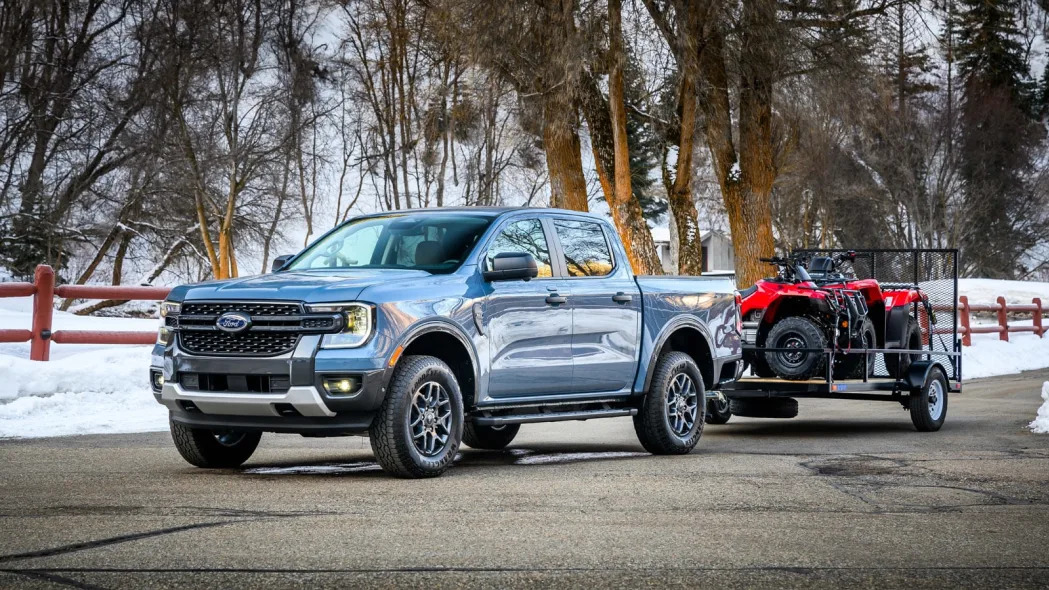
The Ranger also demonstrates ample refinement in terms of its ride. There is the expected body-on-frame wiggling and jiggling over bigger bumps, but the damping is spot-on, sopping up bumps yet controlling rebound exceptionally well. It feels sophisticated. Chassis response and body motions on winding mountain roads were also very good for a small truck, but the steering is too numb, especially on center, and is a letdown given the rest of the dynamic package. Selecting the Sport mode tightens things up a bit, but the Ranger's steering was better before. Could it be better now? Ask me again in a couple days.
It's probably worth mentioning here that the Ranger doesn’t just have a steering wheel, but a steering knob as well. Inherited from the F-Series, the Ranger is available with the Trailer Reverse Guidance system that allows you to use the knob surrounding the 4x4 controls to steer the truck in reverse when attached to the trailer. Just look in the side mirrors or at the rear/side camera feed, and turn the dial in the direction you want, just as you would the steering wheel when facing forward. No need to do the usual mental gymnastics normally required to back up a trailer. I was indeed able to more precisely reverse a trailer through a couple chicanes worth of narrowly spaced cones. You can see it in action below.
View this post on Instagram
You might have noticed earlier when discussing payload that I specifically compared the new Ranger to the last-generation Ranger SuperCrew. That’s because the 2024 Ranger is only available with a single body-bed configuration: crew cab and 5-foot bed. The SuperCab and its longer bed are no more. GM made the same choice for its midsize trucks, while Toyota continues to offer two cab sizes plus the option of pairing the extended cab’s longer bed with the crew cab. So does the Nissan Frontier. Not surprisingly, product planner Andrew Cascadan says data indicated the SuperCrew/5-foot combo is what most people wanted, and that it made more sense to devote whatever budget might’ve been used for creating a SuperCab towards other improvements.
If any went toward cabin quality, design and feature content, good call bean counters. The new Ranger’s interior is not only suitably modern compared to its antiquated predecessor, but its quality is surprisingly good for a midsize truck and, quite frankly, for a lower-priced Ford. While the Lariat and Raptor gain a padded and stitched soft-touch pleather to the doors and dash, even a basic, $39,520 XL with the STX appearance package we drove (pictured above in blue) benefits from richer looking plastics than what you’ll find in the Tacoma and basic GM trucks. There’s a mixture of textures that agreeably distract from what is still hard plastic. The unique air vents admittedly add most of the visual zing, along with one of two vertically oriented touchscreens.
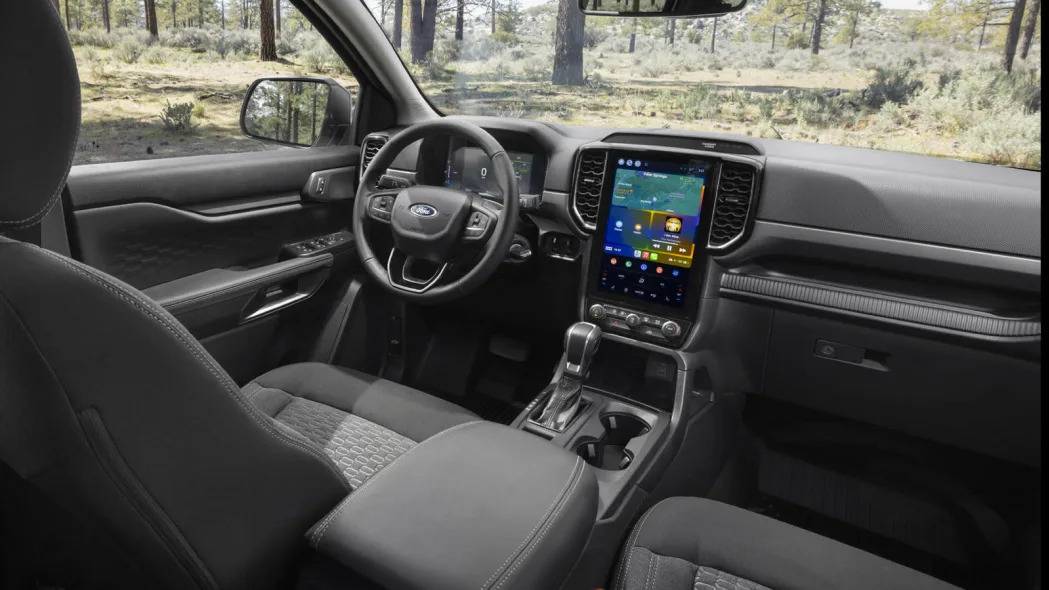
Speaking of which, Cascadan said that besides “tough” and “rugged,” customers were also seeking “modern,” and there’s nothing more modern than great-big displays. It’s actually a bit hard to tell that there’s a difference in size between the standard 10-inch and upgrade 12-inch screens. Both have the same, new derivative of Sync 4A that utilizes the vertical space well, including with a new, square-orientation for Apple recently devised for CarPlay that lets the system only partially take up the available real estate (somebody please tell Toyota this is possible). The instrument panel is available in 8- or 12-inch sizes, with the latter more customizable, feature-packed and typical in appearance. The base screen has a similar unusual layout as the Bronco with its vertical bar graph tach.
Customers also apparently wanted better storage, so Ford added a sizeable bin under the touchscreen that can house the available wireless charger plus a small shelf on the passenger-side dash. The Lariat and Raptor also get a second glove box above, but that just seems like nickel-and-diming the lower trims that aren’t exactly cheap with starting prices in the upper $30,000s. Ditto the fact the XL's bins aren't lined in the same rubbery material found in the upper trims; what good is a bin if your stuff flies off its slick plastic surface?
There’s another bin under the back seat, which now has a fold-flat seatback. That would be another customer request, and although certainly more beneficial for carrying cargo than what was there before, both the seat back and bottom are still one piece. It’s therefore difficult to carry a passenger back there in addition to cargo, especially luggage. The Tacoma and GM trucks have 60/40-split seats.
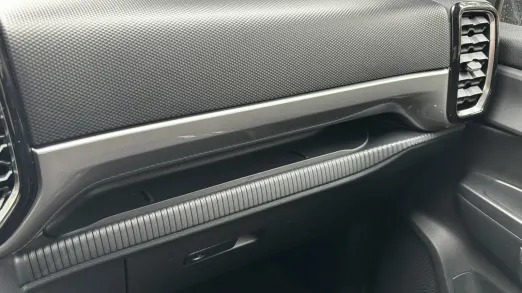
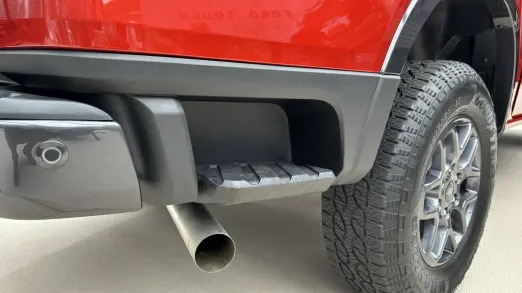
With a wider Ranger also comes a wider bed, particularly between the wheel wells where the gap measures 4 feet. Bring on the plywood! Ford added a “Box Side Step” between the bumper and wheel well, but it’s not a corner step like those of the Tacoma and GM trucks that help you climb into the bed. This is for giving you a boost when leaning over the side – the Super Duty has something similar between the wheel and cab, but that placement’s not an option in the Ranger. I’m honestly not sure how useful it is; I think I’d rather have an assist step into the bed like the one offered by the F-150.
Ah yes, it’s about time the Ranger’s big brother was mentioned. For Americans used to Ford trucks looking a certain way, the last Ranger was always a bit, well, foreign. The new one is certainly no Mini Me, but there’s also now a family resemblance that should make opting for the Ranger and its many benefits easier to appreciate. Those benefits would of course be price, efficiency and, crucially, a sportier and more maneuverable character. If anything, I think Ford could have turned up the foreigner dial a little more, at least in terms of the accessory catalog. Perusing the Australian Ford configurator reveals a “manual roller shutter” bed cover not unlike the Hyundai Santa Cruz’s, a factory-fit "Stylish Dual Lift Canopy" bed cap, and a “Flexible Rack System” pictured below in gray that includes SUV-style roof rails and cross bars, rails on top of the bed walls and a presumably flexible-in-some-way replacement for the tubular roll bar and buttresses (or whatever they’re called in Australian) included on most Ranger models Down Under. And while I’m at it, the roll bar and buttresses should be offered, too. They’re cool, just ask Marty McFly.
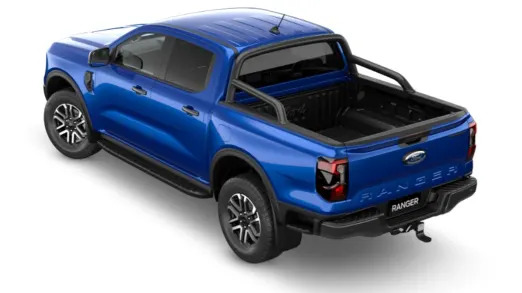
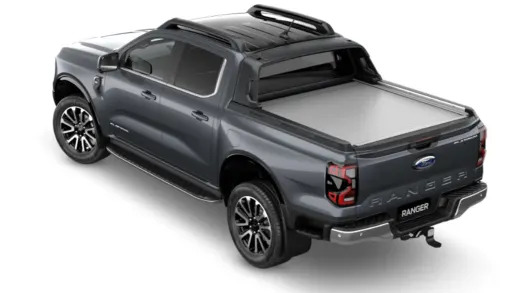
Pricing starts at $34,265 including the hefty $1,596 destination charge, and clearing $50,000 for a Lariat 4x4 with options. Before clicking off to see base prices for its rivals, know that you won’t be seeing apples to apples. The Tacoma and Frontier offer extended cabs, for instance, while the Colorado comes with less equipment (most notably when comparing the popular Ranger XLT versus Colorado LT). The Ranger also comes with more standard power. This is all a long way of saying “the Ranger may seem more expensive, but look closer.”
The tricky bit will be getting midsize truck buyers to look at something other than a Tacoma. Toyota’s overhauled best-seller is bound to continue its overwhelming supremacy in the midsize truck segment, but this update of the Ranger at least seems bound to increase Ford’s share of whatever pie remains. A new comparison of that pair plus the Chevy Colorado/GMC Canyon, and oh heck, Nissan Frontier would be mighty interesting. I’d venture the Ranger would stand a very solid chance of being a repeat champion.
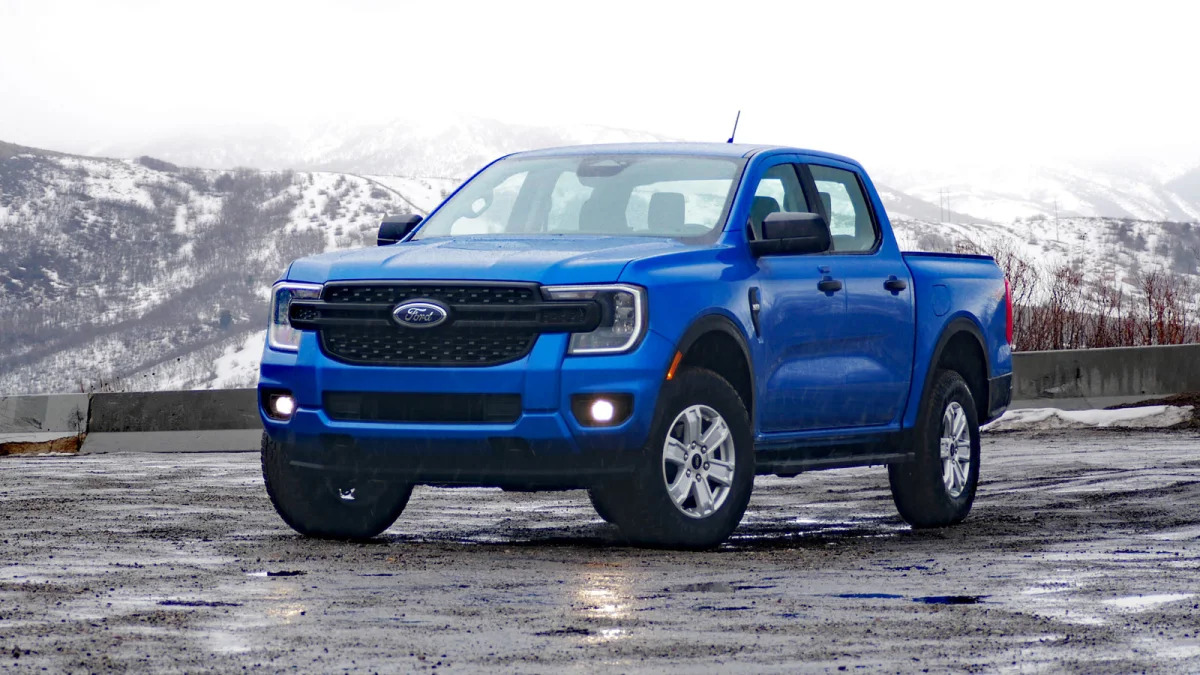









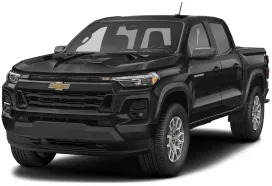
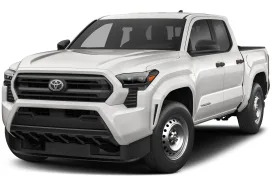

Sign in to post
Please sign in to leave a comment.
Continue